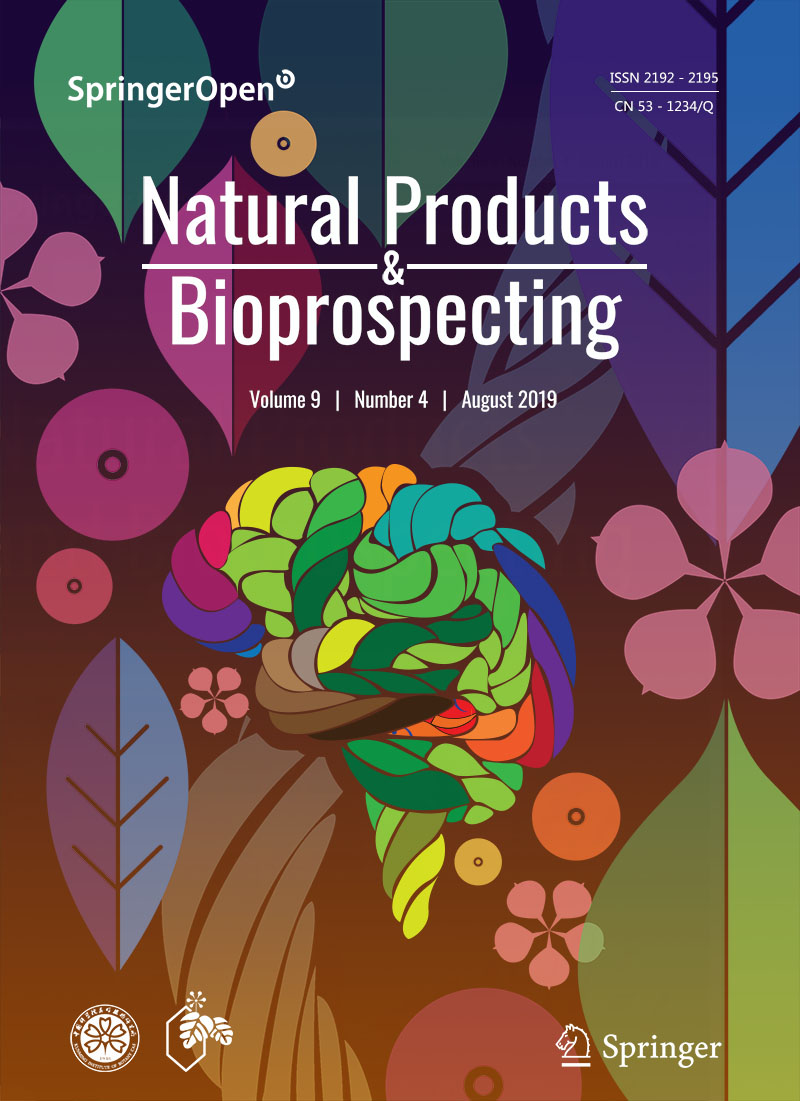|
|
Ayahuasca: Uses, Phytochemical and Biological Activities
Collect
Edgar Antonio Estrella-Parra, Julio Cesar Almanza-Pérez, Francisco Javier Alarcón-Aguilar
Natural Products and Bioprospecting. 2019, 9 (4): 251-265.
DOI: 10.1007/s13659-019-0210-5
Ayahuasca (caapi, yajé), is a psychoactive brew from the Amazon Basin region of South America traditionally considered a "master plant." It is prepared as a decoction from Banisteriopsis caapi and Psychotria viridis, which it is thought that it stimulates creative thinking and visual creativity. Native healers of the Orinoco and Amazon basins have used traditionally ayahuasca as a healing tool for multiple purposes, particularly to treat psychological disorders in the patients, with some beneficial effects experimentally and clinically validated. Recently, several syncretic religions, as the "União de Vegetal" (UDV) group in Brazil, have been spread around the world. The use of ayahuasca has been popularized by internet and smart-shops, bringing the psychoactive substance to new highs, emerging new "ayahuasqueros." Ayahuasca has alkaloids as β-carbolines and dimethyltryptamines, which inhibit the monoamine oxidase and active the 5-HT2A (5-hydroxytryptamine) receptor, respectively, resulting in hallucinations in the users. Ayahuasca induces a psychedelic change in the anteroposterior coupling of the electrophysiological brain oscillations in humans. Traditional ayahuasca beverage is generating pharmacological, commercial and spiritual interest among the scientific community, government people, and different populations worldwide. The goal of this article is to report about the uses, chemistry and biological activities of ayahuasca.
References |
Related Articles |
Metrics
|
|
|
Eminence of Microbial Products in Cosmetic Industry
Collect
Prabhuddha L. Gupta, Mahendrapalsingh Rajput, Tejas Oza, Ujwalkumar Trivedi, Gaurav Sanghvi
Natural Products and Bioprospecting. 2019, 9 (4): 267-278.
DOI: 10.1007/s13659-019-0215-0
Cosmetology is the developing branch of science, having direct impact on the society. The cosmetic sector is interested in finding novel biological alternatives which can enhance the product attributes as well as it can substitute chemical compounds. Many of the compounds are having biological origin and are acquire from bacteria, fungi, and algae. A range of biological compounds, like bio-surfactant, vitamins, antioxidants, pigments, enzymes, peptides have promising features and beneficial properties. Moreover, these products can be produced commercially with ease. The review will encompass the importance and use of microbial compounds for new cosmetic formulations as well as products associated with it.
References |
Related Articles |
Metrics
|
|
|
A Fragmentation Study on Four Oligostilbenes by Electrospray Tandem Mass Spectrometry
Collect
Chen-Chen Zhang, Chang-An Geng, Ji-Jun Chen
Natural Products and Bioprospecting. 2019, 9 (4): 279-286.
DOI: 10.1007/s13659-019-0212-3
Oligostilbenes have attracted much interest due to their intricate structures and diverse bioactivities. In this study, two stilbene dimers, (-)-7,8-cis-ε-viniferin (1) and carasiphenol A (2), and two trimers, suffruticosol A (3) and suffruticosol C (4), were investigated by electrospray ionization ion-trap time-of-flight multistage mass spectrometry (ESI-IT-TOF-MSn). Based on the MSn study, the fragmentation pathways and diagnostic ions of four oligostilbenes in both positive and negative modes were proposed. The consecutive elimination of phenol (C6H6O) and resorcinol (C6H6O2) moieties were the particular dissociation for oligostilbenes due to the presence of 1,2-diphenylethylene nucleus. The present MSn fragmentation study will provide valuable information for the fast characterization of oligostilbenes from complicated natural mixtures.
References |
Related Articles |
Metrics
|
|
|
Anti-inflammatory and Cytotoxic Triterpenes from the Rot Roots of Panax notoginseng
Collect
Jia-Huan Shang, Guo-Wei Xu, Hong-Tao Zhu, Dong Wang, Chong-Ren Yang, Ying-Jun Zhang
Natural Products and Bioprospecting. 2019, 9 (4): 287-295.
DOI: 10.1007/s13659-019-0211-4
Four new protopanaxatriol-type triterpenes (1-2) and glucosides (3-4), were isolated from the rot roots of Panax notoginseng (Burk.) Chen, along with four known ones (5-8). Their structures were elucidated on the basis of extensive spectroscopic analysis (HRESIMS, NMR, UV, IR, and OR) and acidic hydrolysis. The possible transformation pathway of these compounds were also speculated from ginsenoside Rg1. Compound 1, with a unique α,β-unsaturated ketene in its side chain, showed significant inhibitory effects against NO production on Murine macrophage cells (IC50=4.12 ±0.20 μM) and comparable cytotoxicities against five human cancer cell lines (myeloid leukemia HL-60, lung cancer A-549 cells, hepatocellular carcinoma SMMC7721, breast cancer MCF-7, and colon cancer SW480) to positive control, cisplatin (DDP).
References |
Related Articles |
Metrics
|
|
|
Melatonin Receptors Agonistic Activities of Phenols from Gastrodia elata
Collect
Si-Yue Chen, Chang-An Geng, Yun-Bao Ma, Ji-Jun Chen
Natural Products and Bioprospecting. 2019, 9 (4): 297-302.
DOI: 10.1007/s13659-019-0213-2
Gastrodia elata is a famous traditional Chinese herb with medicinal and edible application. In this study, three new polybenzyls, gastropolybenzylols G-I (1-3) were isolated from the EtOAc extract of G. elata. Their structures were identified by extensive spectroscopic analyses involving HRESIMS, UV, IR, 1D and 2D NMR. Compound 1 showed agonistic effects on MT1 and MT2 receptors with agonistic rates of 55.91±4.84% and 165.13±5.65% at the concentration of 0.5 mM, respectively, and an EC50 value of 76.24 μM on MT2 receptor.
References |
Related Articles |
Metrics
|
|

